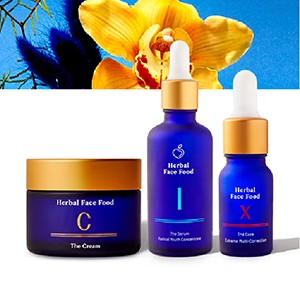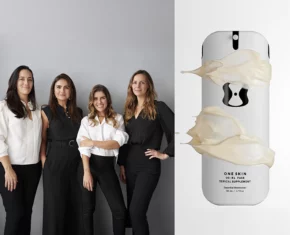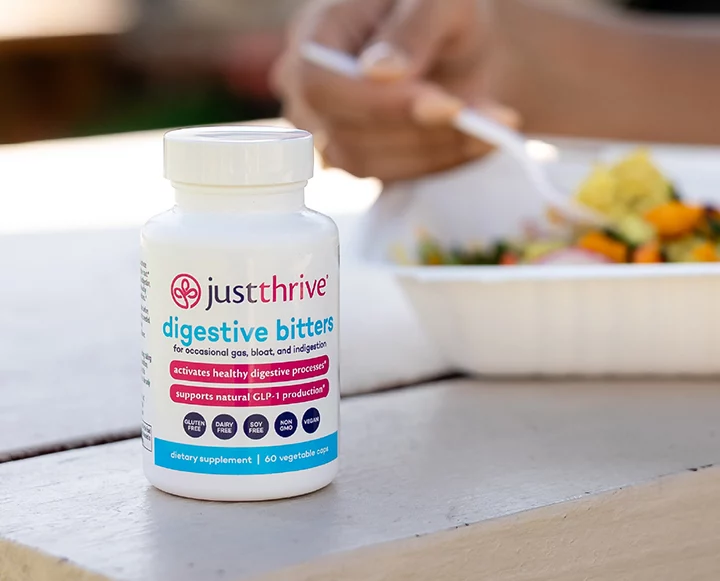Food is medicine and we don’t mean that as a metaphor. When it comes to addressing common yet uncomfortable conditions like hormonal imbalance it can be tempting to take aggressive measures. What we really need is to be gentle to our bodies, to listen to their cry for help and to treat them with the best care in the form of good, natural nourishment.
Holistic Nutritionist and women’s wellness expert, Kristin Dahl, has been talking to us about estrogen dominance all month. According to Kristin, “estrogen dominance is one of the most common hormonal imbalances women experience, which can be due to either excess estrogen or a lack of progesterone in the body. Either way, there is an imbalance between estrogen and progesterone and this imbalance can negatively impact health in numerous ways”.
We broke down the topic here and dove into some fascinating details here. Below, Kristin is sharing how to get back to balance using clean, whole food nutrition. As with any medical concern, it’s important to check in with your doctor, but this holistic guide is a helpful place to start your journey back to balance…
How Do I Use Foods To Heal Estrogen Dominance?
Increase + focus on these foods:
Eat lots of whole foods from the Brassica family and cruciferous vegetables (great at supporting the liver’s detoxification process). Increase fiber, probiotic-rich foods and water.
Aim for 2.5 liters of pure filtered water daily to help remove toxins and excess estrogen from the body. Water is needed for all bodily functions including healthy bowel movements.
Whole food simply means food in its natural form (the way it is right after harvesting). A diet high in processed and refined carbohydrates and sugars can increase estrogen to unhealthy levels. Increase whole foods such as root vegetables, dark leafy greens, kale, collards, berries, quinoa, avocado, nuts and seeds. Increase intake of broccoli, Brussels sprouts, cabbage, collard greens, kale, watercress, turnip, horseradish, mizuna and cilantro. (Note: If eaten raw, this family of vegetables can inhibit thyroid function.)
Fiber is critical for healthy bowel movements, which is the main way for excess estrogen to exit the body. The general rule is at least 35 grams of fiber per day. It is easy to reach this if consuming a whole foods-based diet. Fiber-rich whole foods include broccoli, pears, lentils and ground flax seeds. If you’re in need of more fiber, try having oatmeal and/or oat bran a few times a week or psyllium husks. Fiber is a natural source that binds to estrogen excreted by the liver and brings it into the intestinal tract for elimination while preventing estrogen reabsorption. Try psyllium husks powder (200 mg daily) and plenty of water.
Probiotic-rich foods are essential to digestive health, energy production, healthy skin and metabolism of hormones, but will also create an environment of higher good bacteria in the gut. This reduces the risk of bad bacteria converting estrogen that reaches the bloodstream and promotes regular bowel movements and elimination. Eat probiotic-filled foods like cultured vegetables that are fermented (kimchi and sauerkraut), coconut kefir, apple cider vinegar, natural kombucha (look for low-sugar content) and organic tempeh and miso.
Eat plenty of healthy fats that support healthy hormones like avocados, walnuts, olive oil, coconut products, nuts and seeds. Flax seeds contain lignans that help balance hormone metabolism and block the negative effects of excess estrogens.
Eliminate and Reduce These Foods:
The Standard American Diet, consisting of sugar, wheat, dairy and artificial ingredients, is a nightmare for the human body. The guidelines from the SAD are wreaking havoc with our blood sugar and hormones. Foods are processed with xenoestrogens in the form of chemicals, hormones and antibiotics — substances which contribute to the increase in obesity by adding to fat storage in cells and burdening the liver, which is trying to detoxify excess estrogens.
Limiting animal products (meat, dairy) is especially important — and this is mostly to avoid conventional animal products. Choose only grass-fed, free-range and organic, but also be mindful of the overall intake of these products as well.
Use only organic soy and in moderation. If you choose to consume soy, choose organic and fermented soy, such as miso and tempeh as the healthiest way to go.
Limit alcohol and caffeine. The liver is forced to work extra hard to eliminate alcohol from the body and so it cannot focus on eliminating estrogen and other toxins at the same time. The estrogen marked for elimination then accumulates in body fat instead and is recirculated in the body. Excessive intake of caffeine exhausts the adrenal glands and can further drain these glands which increases estrogen levels.
Be conscious of drinks. Replace cold drinks with water, smoothies and herbal infusions. Replace warm drinks with herbal teas (e.g. dandelion, burdock and milk thistle teas), which support the liver’s detoxing process. Order caffeine-free lattes such as turmeric lattes, pumpkin lattes, hot cocoa, etc. The key is to use natural, healthy products and minimize the consumption of dairy.
In general, enjoy fresh, organic, raw or lightly cooked produce as much as possible. Eat organic, free-range, grass-fed meat, poultry and dairy in limited quantities. Avoid commercial wheat, and if you must occasionally eat wheat, make it organic (try sprouted/fermented options like sourdough).
Replace refined sugar with natural sweeteners like dates, honey or maple syrup, again in small quantities.
The Chalkboard Mag and its materials are not intended to treat, diagnose, cure or prevent any disease. All material on The Chalkboard Mag is provided for educational purposes only. Always seek the advice of your physician or another qualified healthcare provider for any questions you have regarding a medical condition, and before undertaking any diet, exercise or other health-related programs.












